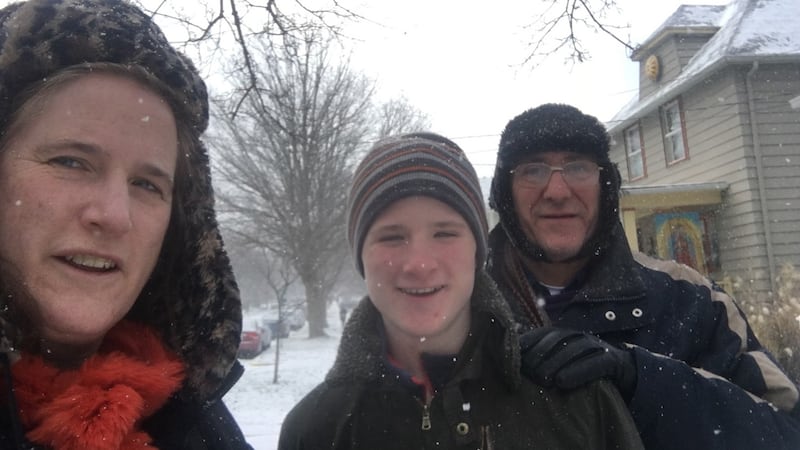This morning at 4am I was awoken by the sound of people walking up my road having a loud conversation. The silence of the night and the thick padding of snow amplified their voices.
As I looked out the window at the winter wonderland, I wondered – where are they going? Emergency workers on their way to keep us all electrified or on the buses? The giveaway was their raised voices; they sounded tiddly. The Irish reaction to extreme weather: 1. Batten down the hatches for a snow-in (a version of the lock-in); 2. Share slagging about bread shortages and clips of Colm Meany roaring "Red Alert"; 3. Wheeee in the white stuff; 4. Rise to the occasion and keep the hospitals and services on the road for the emergency period.
I look out the window again into the darkness and realise it’s not actually snowing, and there’s only a moderate coating of white, in my little pre-blizzard world. So, not so bad so far.
This time last year I was regularly woken at 4am by the sound of slow-ploughs on the street. I was living in Ann Arbor in Michigan, a small and wonderful city right beside the Canadian border, and the home of University of Michigan. How differently we in Ireland deal with extreme weather because it's rare. Their winters are always very, very cold but life must go on. They are prepared for it and, blizzards aside, life doesn't stop.
Clearing streets
On our suburban Ann Arbor street the snow-ploughs (or snow-plows in Americanese) cleared streets in the dead of night, and residents are legally obliged to clear the sidewalks outside their homes of snow (I’m not sure if they clap you in jail or fine you if you don’t play your part; we didn’t test it). So the footpaths are passable, the streets are drivable for cars and public transport, and people can get around, with caution.
Life goes on through the freezing winter and there’s no emergency unless there’s a storm. Thankfully we had a garage so as long as we remembered to put the car in there was no digging it out from under a snowy mound. We were advised on day one to get good boots and always have blankets, scrapers, water and a torch in the car. Once set up, you just get on with it. There was no concern about bread.

Even though our lovely American house was built of what appeared to be balsa wood, it had double doors and storm windows and we were cosy. All that cheap energy and lack of concern about finite resources pays off in comfort (she smiles wryly). Our house had a thermostatic control so sophisticated I couldn’t figure out how to turn the heating off. I asked our landlord how to switch the heat off at night, but he didn’t know how to either, and was perplexed to be asked. We just turned it right down each night.
Duvet-like coats
It was a relatively mild winter in Michigan last year, apparently, but as we walked about the frozen city on the coldest days wearing duvet-like coats and with longjohns many layers beneath, our only exposed bits – a strip around the eyes – hurt with the cold. In classes and events at the university, people stripped off their layers of protection but generally spent the day wearing strong leather boots with good tread. None of the changing into indoor shoes palaver; punk chic was where it was at for pretty much everyone.
Armies of snow ploughs, gritters and snow clearing equipment, plus the staff to use them, to ensure life goes on as normal is an expensive infrastructure to set up, but it makes sense in a properly cold climate such as Michigan where they’re in regular use for months every year. Similarly, our overpriced utilities are not up to the job; really cold climates need efficient renewable energy and cheap bills.
As I look around me this beautiful white morning of calm before the storm (without water coming out of my kitchen taps, worryingly, but otherwise all good so far), I’m wondering if the Michigan way will be our Irish future. If extreme weather events continue and become yearly, we’ll have to get serious and gear up so life doesn’t shut down. (But we can still swap bread shortage gifs.)











